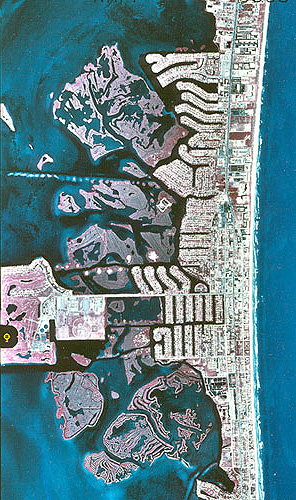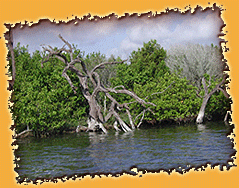|
 |
During the early 1970s, ditching by dragline was used in an effort to eliminate salt marsh in order to control mosquitoes. Most of the productive salt marshes that once rimmed the Indian River Lagoon were degraded in a similar manner. One side effect of this dredging was the creation of a maze of narrow trails through mangrove islands and hidden hammocks that are spectacular for kayaking. The canals provide shelter for manatees, dolphins and a wide variety of coastal birds.
This area is rich in both tropical and temperate plant species, some of which are found not much farther north than the Thousand Islands. The vegetation communities of the Thousand Islands include three habitat types: natural marsh, dredge-spoil and tropical hammock associated with shell middens. (Middens are trash piles of clam and oyster shells; all that remains of Florida's original inhabitants -- pre-Columbian Native American Indians.) These unique tropical hammocks, in particular, provide resting space and feeding areas for neotropical migrant bird species; the wetlands and ponds are a haven for many wading birds and migratory waterfowl.
Salt marsh in the Thousand Islands is dominated by tropical salt marsh plant species such as glasswort and saltwort and is fringed by all three species of mangrove.
|
 |







